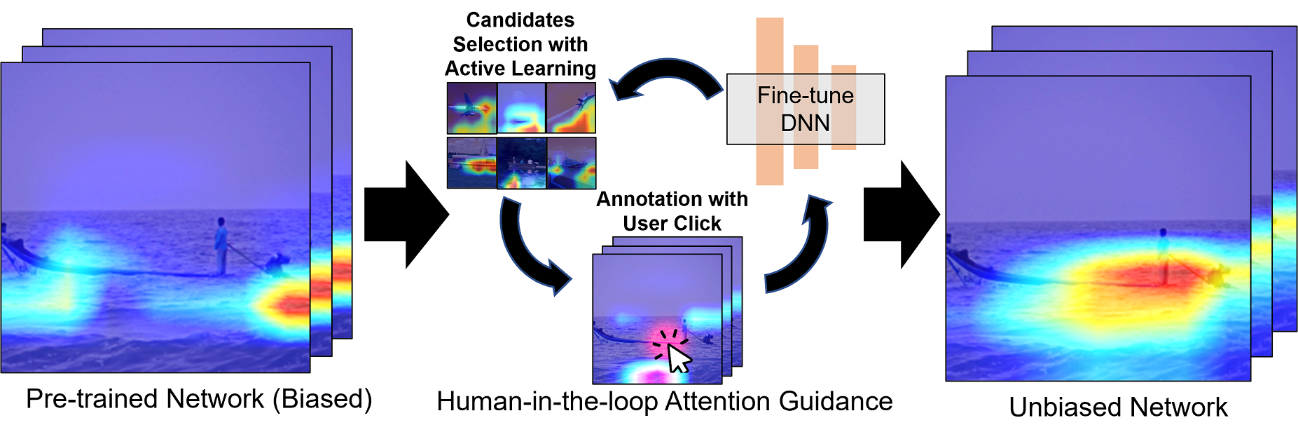However, the training dataset can cause problems if it is not properly designed. For instance, with respect to the previous example, since images of boats are generally taken when the boat is in water, the DNN may recognize only water, instead of the boat, and still say that the image has a boat in it. This is called a co-occurrence bias and it is a very common problem that is encountered while training DNNs. To solve this problem, a team of researchers, include Yi He, a researcher from Japan Advanced Institute of Science and Technology (JAIST), Senior Lecturer Haoran Xie from JAIST, Associate Professor Xi Yang of Jilin University, Project Lecturer Chia-Ming Chang of the University of Tokyo, and Professor Takeo Igarashi, has reported a new human-in-the-loop system. A paper detailing this system has been published in the proceedings of the 28th Annual Conference on Intelligent User Interface (ACM IUI 2023). According to Prof. Xie, “There are some existing methods to solve the co-occurrence bias by either reorganizing the dataset or telling the system to focus on specific areas of the image. But reorganizing the dataset can be very difficult, while current methods for marking regions of interest (ROI) require extensive, pixel-by-pixel annotations by humans hired to do so, which incurs a high cost. Thus, we created a much simpler attention method which helps humans point out ROI in the image using a simple one-click method. This drastically reduces time and costs for DNN training, and thus, deployment.”
The team realized that previous approaches for attention guidance were inefficient because they were not designed to be interactive. Thus, they proposed a new interactive method to annotate images through one click. Users simply left click on parts of the image that are to be identified and, if need be, right click on parts of the image that should be ignored. Thus, in case of the images with boats, users will left click on the boat and right click on the water around it. This helps the DNN identify the boat better and reduces the effects of the co-occurrence bias inherent to training datasets. To reduce the images that need to be annotated, a new active learning strategy using a Gaussian mixture model (GMM) was devised.
This new system was tested against existing ones, both numerically and through user surveys. The numerical analyses showed that the new active learning method was more accurate than any of the existing ones, while user surveys showed that the click-based system reduced the time required to annotate ROI by 27%, and 81% of the participants preferred it over other systems.
“Our work can drastically improve the transferability and interpretability of neural networks by increasing their accuracy for real-world applications. When systems make correct and clear decisions, it increases the confidence users have in AI and makes it easier to deploy these systems in the real world. Thus,” Prof. Xie concludes, “our work focuses on increasing the trustworthiness of DNN deployments, which can have a major impact on the application and development of AI technologies in society.”
The team believes their work could have a strong influence on the tech industry and enable more applications of AI technologies in the near future. In today’s rapidly developing world, this is an important contribution!
###
Reference
| Title of original paper: | Efficient Human-in-the-loop System for Guiding DNNs Attention |
| Author: | Yi He, Xi Yang, Chia-Ming Chang, Haoran Xie, Takeo Igarashi |
| Journal: | Proceedings of the 28th Annual Conference on Intelligent User Interface (ACM IUI 2023) |
| DOI: | https://doi.org/10.1145/3581641.3584074 |
| Project Video: | https://youtu.be/2MD-z6vXKJ4 |
| Project Page: | https://yang-group.github.io/#/ProjectPageIUI2023 |
| Source Codes: | https://github.com/ultratykis/Guiding-DNNs-Attention |
About Japan Advanced Institute of Science and Technology, Japan
Founded in 1990 in Ishikawa prefecture, the Japan Advanced Institute of Science and Technology (JAIST) was the first independent national graduate school in Japan. Now, after 30 years of steady progress, JAIST has become one of Japan’s top-ranking universities. JAIST counts with multiple satellite campuses and strives to foster capable leaders with a state-of-the-art education system where diversity is key; about 40% of its alumni are international students. The university has a unique style of graduate education based on a carefully designed coursework-oriented curriculum to ensure that its students have a solid foundation on which to carry out cutting-edge research. JAIST also works closely both with local and overseas communities by promoting industry–academia collaborative research.
About University of Tokyo, Japan
The University of Tokyo is Japan’s leading university and one of the world’s top research universities. The vast research output of some 6,000 researchers is published in the world’s top journals across the arts and sciences. Our vibrant student body of around 15,000 undergraduate and 15,000 graduate students includes over 4,000 international students. Find out more at www.u-tokyo.ac.jp/en/
About Prof. Haoran Xie from Japan Advanced Institute of Science and Technology, Japan
Haoran Xie is a Senior Lecturer at JAIST from October 2020 and works in the Creative Society Design Research Area of JAIST. Before that, he was Assistant Professor at JAIST, and Project Assistant Professor and postdoc researcher in the user interface research group, working with Prof. Takeo Igarashi at University of Tokyo. He got his Ph.D. and M.S. from JAIST in 2015. With over 70 peer-reviewed publications and near 10 years of professional experience, Prof. Xie’s work has garnered him many academic awards, including several Best Paper Awards in international conferences, and FUNAI Research Award for Young Scientists. His work has been reported by various medias include Tech Xplore, China Science Daily, Nikkan Kogyo Shimbun and ITmedia NEWS. His research areas include computer graphics, human-computer interaction, deep learning, and user interface.
Funding information
- JST Core Research for Evolutionary Science and Technology (CREST) Grant Number JPMJCR17A1 (Led by Prof. Takeo Igarashi)
- JAIST Research Grant for the Establishment of an Advanced Research Base ((Led by Prof. Haoran Xie)
- JAIST Research Grant for Research Center for Cohabitative-AI×Design (Led by Prof. Kazunori Miyata)


